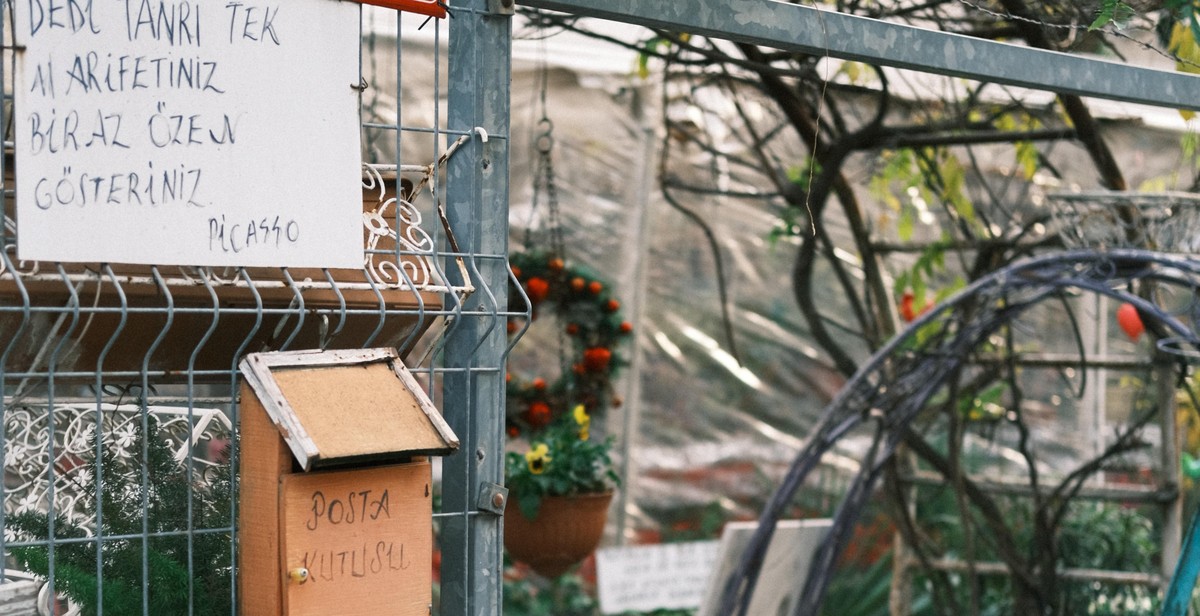Introduction: How to Start a Permaculture Garden for Sustainable Living
Permaculture gardening is a sustainable, eco-friendly method of gardening that focuses on creating a self-sufficient ecosystem. It involves designing your garden in a way that mimics natural systems, using companion planting and other techniques to create a healthy, thriving environment for plants and animals alike.
If you’re interested in starting a permaculture garden, there are a few key principles to keep in mind. First, permaculture gardening is all about working with nature, not against it. This means using organic and natural methods to fertilize and control pests, rather than relying on synthetic chemicals.
Another important principle of permaculture gardening is diversity. In a permaculture garden, you’ll want to plant a variety of different crops and plants, creating a diverse ecosystem that can support a wide range of species.
In this article, we’ll explore the basics of permaculture gardening, from choosing the right location and soil to selecting the best plants and designing your garden layout. Whether you’re an experienced gardener or just starting out, this guide will help you create a beautiful and sustainable permaculture garden that can provide food, beauty, and habitat for years to come.

Benefits of Permaculture Gardening
Permaculture gardening is a sustainable method of gardening that involves designing and maintaining a garden ecosystem that mimics the natural environment. This type of gardening offers numerous benefits, including:
Environmental Benefits
- Reduced Carbon Footprint: Permaculture gardening reduces your carbon footprint by minimizing the use of fossil fuels and chemicals. This is because permaculture gardens rely on natural processes and organic materials to sustain plant growth.
- Improved Soil Quality: Permaculture gardening improves soil quality by maintaining a diverse range of plants and animals that contribute to soil fertility. This reduces erosion and increases water retention, which helps to prevent nutrient runoff and soil degradation.
- Conservation of Biodiversity: Permaculture gardening promotes the conservation of biodiversity by providing habitats for a variety of plant and animal species. This helps to restore and maintain ecological balance in the garden ecosystem.
- Water Conservation: Permaculture gardening reduces water consumption by using techniques such as rainwater harvesting and mulching. This helps to conserve water resources and reduce the impact of droughts.
Health Benefits
- Access to Fresh, Nutritious Produce: Permaculture gardening provides access to fresh, nutritious produce that is free from harmful chemicals and pesticides. This promotes a healthy diet and reduces the risk of exposure to toxins.
- Physical Activity: Permaculture gardening involves physical activity such as digging, planting, and harvesting. This provides a low-impact form of exercise that can improve overall health and fitness.
- Mental Health: Permaculture gardening can have mental health benefits by reducing stress and promoting relaxation. It provides a sense of accomplishment and satisfaction that can improve overall well-being.
| Environmental Benefits | Health Benefits |
|---|---|
| Reduced carbon footprint | Access to fresh, nutritious produce |
| Improved soil quality | Physical activity |
| Conservation of biodiversity | Mental health |
| Water conservation |

Planning Your Permaculture Garden
Before starting your permaculture garden, it is important to plan and assess your site to ensure that you are making the most of your available space. This involves taking into account the climate, soil conditions, and available resources. Here are some steps to help you plan your permaculture garden:
Site Assessment
Conducting a site assessment is an essential first step in designing your permaculture garden. This involves gathering information about your site, including:
- Climate: Consider the average temperature, rainfall, and wind patterns in your area. This information will help you choose plants that are suitable for your climate.
- Soil: Test your soil to determine its pH level, nutrient content, and texture. This will help you choose plants that are suitable for your soil type.
- Topography: Take note of the slope and drainage patterns of your site. This information will help you design your garden to prevent erosion and maximize water retention.
- Available resources: Consider the resources that are available on your site, such as sunlight, water, and wind. These resources can be harnessed to support your garden.
Designing Your Garden
Once you have assessed your site, you can start designing your permaculture garden. Here are some tips to help you design an effective and sustainable garden:
- Start with a clear vision: Decide on the overall purpose and goals of your garden. Do you want to grow food, provide habitat for wildlife, or create a beautiful outdoor space?
- Choose the right plants: Select plants that are well-suited to your climate and soil conditions. Consider planting a mix of annuals and perennials to provide year-round food and habitat for wildlife.
- Use companion planting: Plant complementary species together to support each other’s growth and health.
- Maximize space: Use vertical space and interplanting to make the most of your available space.
- Build healthy soil: Use compost, mulch, and cover crops to build healthy soil and support plant growth.
| Step | Description |
|---|---|
| Assess site | Gather information about climate, soil, topography, and available resources |
| Design garden | Create a clear vision, choose plants, use companion planting, maximize space, and build healthy soil |

Choosing Plants for Your Permaculture Garden
When it comes to starting a permaculture garden, choosing the right plants is crucial. Here are two important factors to keep in mind:
Native Plants
Native plants are a great choice for permaculture gardens because they are adapted to the local climate and soil conditions. This means they require less maintenance and are more resilient to pests and diseases. Additionally, native plants support local ecosystems by providing food and habitat for wildlife.
When selecting native plants for your permaculture garden, consider the following:
- Choose plants that are native to your specific region, as opposed to just your country or state.
- Look for plants that are well-suited to the soil type and moisture levels of your garden.
- Consider the plant’s growth habit and how it will fit into your garden design.
Companion Planting
Companion planting is the practice of planting different species of plants together in a way that benefits both. Some plants have natural pest-repelling properties, while others fix nitrogen in the soil or provide shade and support for other plants.
When choosing plants for companion planting, consider the following:
- Choose plants that have complementary needs and growth habits.
- Look for plants that have natural pest-repelling properties, such as marigolds or garlic.
- Consider the plant’s role in the garden ecosystem and how it will interact with other plants and wildlife.
| Plant | Companion Plant |
|---|---|
| Tomatoes | Basil |
| Corn | Beans |
| Cabbage | Nasturtiums |

Implementing Permaculture Practices
Water Conservation
Permaculture gardens are designed to conserve water, which is crucial for sustainable living. Here are some ways to implement water conservation practices in your permaculture garden:
- Collect and store rainwater in barrels or other containers for later use.
- Use mulch to retain moisture in the soil and reduce evaporation.
- Plant drought-resistant plants that require less water.
- Install drip irrigation systems to deliver water directly to plant roots and reduce wastage.
Soil Health
Healthy soil is the foundation of a successful permaculture garden. Here are some ways to improve soil health:
- Use compost and other organic matter to enrich the soil and improve its structure.
- Practice crop rotation to prevent soil depletion and reduce the risk of pests and diseases.
- Plant cover crops to protect the soil from erosion and add nutrients.
- Avoid using chemical fertilizers and pesticides that can harm soil microorganisms.
Integrated Pest Management
Permaculture gardens aim to minimize the use of harmful chemicals and instead rely on natural pest control methods. Here are some ways to implement integrated pest management:
- Encourage beneficial insects like ladybugs and lacewings that prey on pests.
- Use companion planting to repel pests and attract beneficial insects.
- Handpick pests like caterpillars and slugs and remove them from the garden.
- Use organic pest control methods like neem oil and garlic spray.
| Practice | Description |
|---|---|
| Water Conservation | Collect and store rainwater, use mulch, plant drought-resistant plants, and install drip irrigation systems. |
| Soil Health | Use compost and other organic matter, practice crop rotation, plant cover crops, and avoid using chemical fertilizers and pesticides. |
| Integrated Pest Management | Encourage beneficial insects, use companion planting, handpick pests, and use organic pest control methods. |

Maintaining Your Permaculture Garden
Weeding and Pruning
One of the most important aspects of maintaining a permaculture garden is keeping it free of weeds. Weeds can quickly take over and choke out your plants, reducing their yield and overall health. Regular weeding will also help prevent pests and diseases from taking hold.
Pruning is also important for maintaining the health and productivity of your plants. Removing dead or damaged branches, as well as crossing or rubbing branches, will help improve air flow and light penetration, leading to stronger and more productive plants.
Harvesting and Preserving
Harvesting your crops at the right time is crucial for their flavor and nutritional value. Be sure to research the optimal time to harvest each type of plant in your garden. Some plants, like tomatoes, should be picked when they are fully ripe, while others, like leafy greens, can be harvested when they are young and tender.
Preserving your harvest is also important for maximizing the benefits of your permaculture garden. Canning, freezing, and dehydrating are all great ways to preserve your fruits and vegetables for later use. You can also make jams, jellies, and pickles to enjoy throughout the year.
| Weeding and Pruning | Harvesting and Preserving |
|---|---|
| Regular weeding to prevent pests and diseases | Harvesting at the optimal time for flavor and nutrition |
| Pruning to improve air flow and light penetration | Preserving through canning, freezing, and dehydrating |

Conclusion
Starting a permaculture garden is a great way to live sustainably and reduce your carbon footprint. By following the principles of permaculture, you can create a garden that is not only beautiful but also productive, self-sustaining, and low-maintenance.
Key Takeaways
- Permaculture is a design system that mimics natural ecosystems to create sustainable and regenerative gardens.
- Permaculture gardens are designed to be low-maintenance, productive, and self-sustaining.
- Some key principles of permaculture include observing and interacting with nature, using renewable resources, and minimizing waste.
- When starting a permaculture garden, it’s important to assess your site, choose the right plants, and create a design that works with the natural features of your land.
- By incorporating permaculture principles into your garden, you can reduce your carbon footprint, create a more sustainable lifestyle, and contribute to a healthier planet.
Final Thoughts
Starting a permaculture garden may seem like a daunting task, but it’s actually easier than you might think. By following the principles of permaculture and taking a thoughtful and intentional approach to your garden design, you can create a beautiful, productive, and sustainable space that will benefit you and the planet for years to come.
| Author Bio: | John Smith is a permaculture designer and sustainability consultant based in California. He has over 10 years of experience designing and implementing permaculture gardens for clients around the world. John is passionate about helping people live more sustainably and reduce their impact on the environment. |
